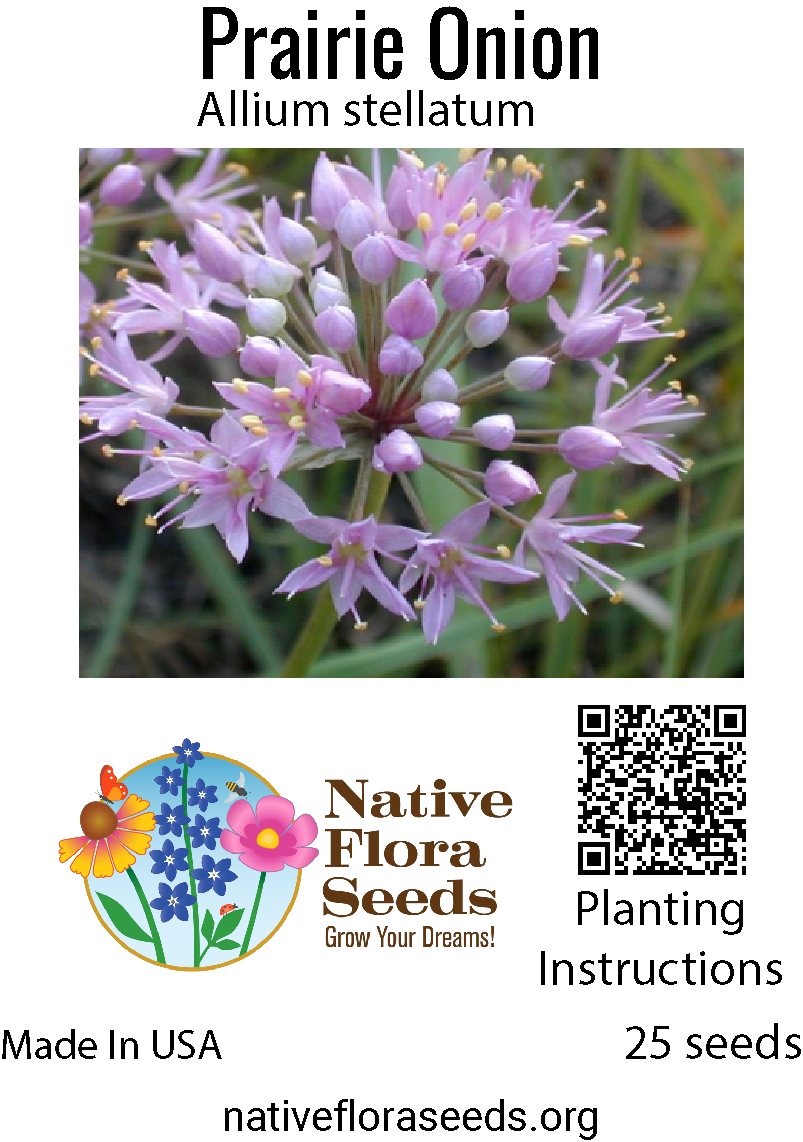Here's a guide to growing Allium stellatum (Starry Wild Onion) from seed in the USA:
Site Selection
Sunlight: Starry Wild Onion prefers full sun (at least 6 hours per day) but can tolerate some light shade, especially in hotter climates. Too much shade can reduce flowering.
Soil: Well-drained soil is crucial. Like most alliums, it will rot in soggy soil. It adapts to various soil types, including sandy, loamy, and even rocky soils, but avoid heavy clay unless amended. A slightly acidic to neutral soil pH is ideal.
Sowing Seeds Outdoors
Fall Sowing: This is often the preferred method.
Sow seeds in late fall, after the first hard frost but before the ground freezes. This allows for natural stratification.
Prepare the soil by clearing any debris and lightly raking the surface.
Scatter seeds evenly over the soil surface.
Lightly cover seeds with a thin layer of soil (about 1/8 to 1/4 inch). They need some light to germinate, so don't bury them too deeply.
Water gently but thoroughly.
Seeds will germinate in the spring.
Spring Sowing:
Sow seeds after the last spring frost.
Prepare the soil as described above.
Sow seeds as described for fall sowing.
Keep the soil consistently moist until seeds germinate. This can be tricky in spring as weather fluctuates.
Starting Seeds Indoors
Timing: Start seeds indoors 8-10 weeks before the last expected spring frost in your area.
Stratification: Allium stellatum seeds benefit from cold stratification to improve germination rates. You can mimic this process:
Mix seeds with moist sand or vermiculite in a sealed container or baggie.
Refrigerate the container for 4-6 weeks.
Sowing:
Sow seeds in seed starting mix, about 1/8 to 1/4 inch deep.
Keep the soil moist but not soggy and warm (65-75°F) until seeds germinate. Germination can be slow and uneven.
Transplanting:
Once seedlings have a few sets of true leaves, gradually acclimate them to outdoor conditions (harden them off).
Transplant seedlings outdoors after the last spring frost, spacing them 4-6 inches apart
Planting Depth
Seeds: 1/8 to 1/4 inch. Don't plant them too deeply.
Transplants: Plant at the same depth they were growing in their pots.
Watering
Keep the soil consistently moist until seeds germinate and seedlings are established.
Once established, Starry Wild Onion is relatively drought-tolerant. Water during prolonged dry spells, but avoid overwatering, especially in winter.
Stratification and Scarification
Stratification: As mentioned above, cold stratification is highly recommended for Allium stellatum seeds.
Scarification: Scarification (scratching or nicking the seed coat) is generally not necessary for this species.
Maintenance Tips
Mulching: A light layer of mulch can help retain moisture, suppress weeds, and regulate soil temperature. However, avoid mulching right up against the crown of the plant.
Deadheading: Remove spent flower stalks if you don't want it to self-seed. However, leaving some seed heads provides food for birds.
Division: Established clumps can be divided every few years to prevent overcrowding and rejuvenate the plants. Do this in the fall.
Pest and Disease Control: Allium stellatum is relatively pest and disease resistant. Watch for common onion pests like thrips or onion flies, and fungal diseases in overly wet conditions.
Invasiveness
Allium stellatum is not considered invasive. It can self-seed, but it's not aggressive.
Additional Notes
Allium stellatum is a native plant to North America, making it a great choice for natural gardens, meadows, and pollinator gardens.
It attracts bees, butterflies, and other beneficial insects.
The flowers are long-lasting and make excellent cut flowers.
Deer tend to avoid alliums.
Be patient with seed germination, especially when starting indoors.
Allium stellatum can be a bit slow. But the beautiful, star-shaped flowers are worth the wait!
Sources and related content



